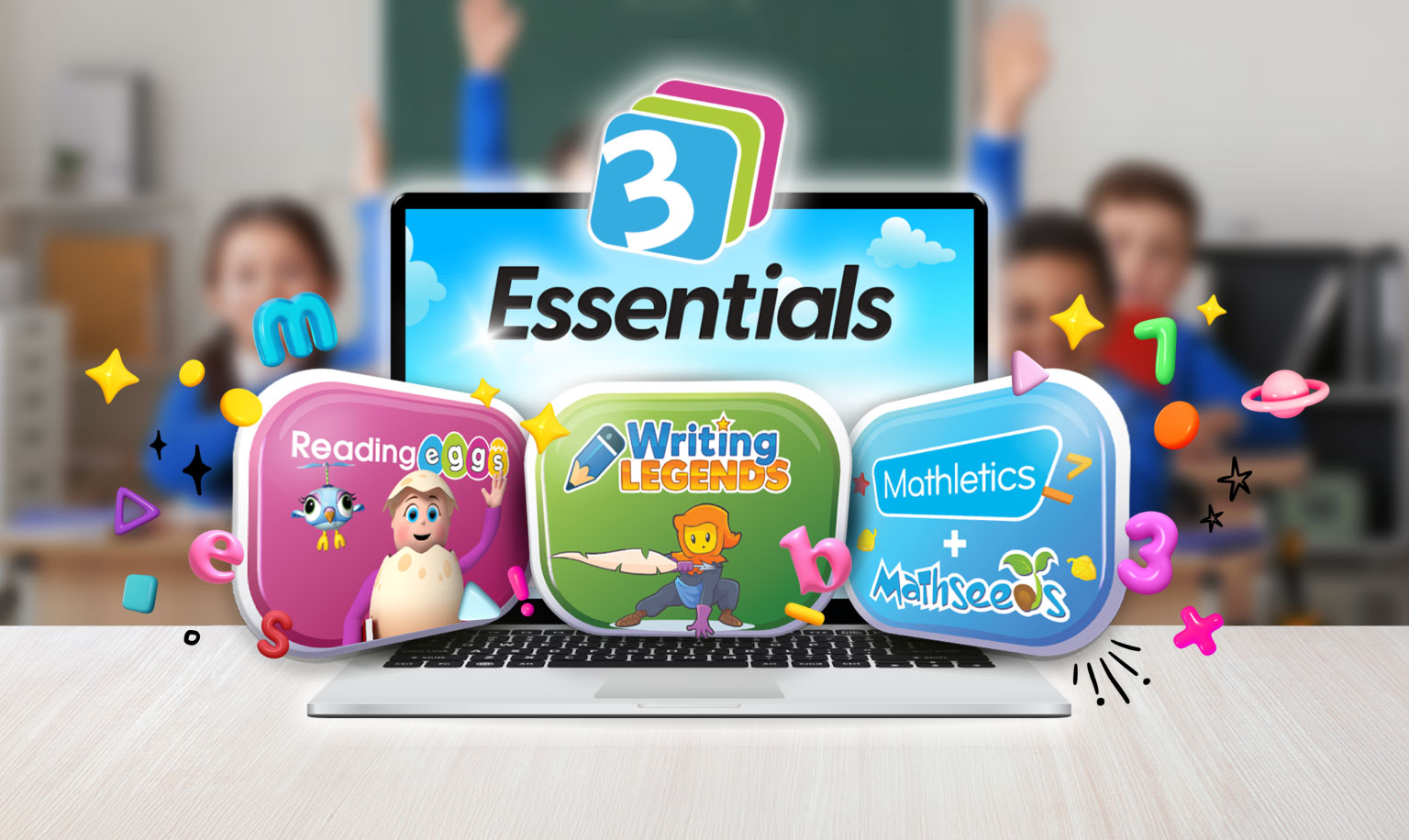
Teaching persuasive writing to our students allows them to communicate their ideas with conviction, influence others, and make their voices heard in an increasingly competitive and crowded world.
Here you’ll find a step-by-step overview of how to teach persuasive writing, so you can empower your students with a gift that will last them well beyond school
Explain to students what persuasive writing is
Your students might already be able to guess that persuasive writing convinces the reader of a particular point of view. Brainstorm all the different texts that do this, such as:
- debates and arguments
- opinion pieces
- feature articles
- speeches
- letters (e.g. a cover letter for a job application)
- reviews
- advertisements
Talk students through the structure of persuasive writing
Persuasive texts ten to built around three central elements. These are:
A statement of position
The statement of position clearly states the central argument of the text — generally near the beginning so audiences know what to expect right from the outset. Here’s an example from Al Gore’s 2007 Academy Award speech:
My fellow Americans, people all over the world, we need to solve the climate crisis. It’s not a political issue; it’s a moral issue. We have everything we need to get started, with the possible exception of the will to act. That’s a renewable resource. Let’s renew it.
This example is effective because Gore’s words are clear, powerful and direct. The audience is left in no doubt as to the central message.
Note: The same text could simply read ‘the climate crisis needs to be solved’, but it wouldn’t be half as effective. The use of persuasive techniques is what makes it powerful, and we’ll get to what those are later in the article.
Arguments with evidence
Once the central position has been stated, it needs be supported with arguments and evidence.
The most effective persuasive texts provide multiple arguments for one central point. To plan, you can list these as bullet points before you start writing the body of the persuasive piece.
This is also the part where a persuasive text goes into detail. Take the time to explain your arguments thoroughly and support them with evidence at every opportunity.
The takeaway
Persuasive texts finish by telling the reader what they should take away from the text. This might be a change to their way of thinking, an action to take or a new understanding or outlook on a point.
Note: A persuasive text conclusion can also include a reminder of the central argument. This won’t be necessary if the text is very short to begin with (e.g. a sentence-length advertisement), but it can be useful in longer texts with plenty of detail in the body.
Ask students to identify these steps in different kinds of persuasive texts, because they’ll look different in each. For example, a feature article might make its argument over several pages, whereas an advertisement persuades a reader to buy a product in just a few words.
Explain the different ways of appealing to an audience
Aristotle (an ancient Greek philosopher) classified persuasion into three different modes: pathos, logos and ethos. Each of these modes seeks to persuade the audience or reader via different means.
We’ll compare each of these by adapting them for a single argument: ‘homework should be a thing of the past’.
Pathos
Pathos appeals to the reader’s emotions in order to persuade them. The text might make them feel delighted, saddened or confronted in order to provoke the desired response. In our argument this might be:
‘When we set children hours of homework, we take away more than just their time. We take away the joy and excitement of youth, the play and freedom that are at the heart of what it means to be young.’
Ethos
Ethos appeals to the reader’s sense of justice. It highlights what is right or wrong about a certain issue in order to persuade readers of an ethically correct choice. We might adapt our argument like this:
‘The rights of the child are, in all cultures, a sacred thing. Why then, do we ignore our children when they tell us that homework takes the fun out of learning and develops only bitterness towards our education system?’
Logos
Logos appeals to the reader’s sense of logic. It makes an argument seem like a clear and rational choice that holds obvious benefits for the reader. Our argument might change to:
‘If we want kids to learn more effectively, we should probably rethink the homework that keeps them up every night and saps their spirit. Get rid of it and kids will come to school each morning happy and eager to learn.’
Explain the importance of PAC: Purpose, Audience, and Context
Help your students understand that persuasive writing is more than just an aimless rant. It’s important for them to consider:
Purpose
Some arguments will have emotional content and therefore be well suited to pathos, for example, while others (e.g. an argument on financial grounds) might be better suited to a more rational approach with logos.
Audience
It’s important to know who the text is addressing and what sorts of arguments are likely to appeal to them. For example, if a text is destined for an audience who has never considered a particular issue, it might be best to spell it out with logos-based arguments before heading into more ethical territory.
Context
Whether it’s a speech at a rally or an advertisement on a billboard, the context in which persuasive text is delivered will determine its persuasive appeals.
Remember: Almost all persuasive texts mix and match the different appeals. Use them strategically throughout the piece to add variety and appeal to as many different audiences as possible. Our piece on ‘homework should be a thing of the past’ might use all of the above arguments at different points to persuade as broad an audience as possible.
Encourage students to use different persuasive techniques
The effectiveness of persuasive writing depends on the use of persuasive techniques as well as appeals. These are the individual language features that add interest and emphasis to the arguments.
Here are six essential persuasive techniques:
Anecdotes
Anecdotes are short recounts of real-life experiences. They are a great way of showing an author or speaker’s personal connection to a topic and linking an idea back to everyday life.
Example: ‘As I sat in bumper-to-bumper traffic, I took a look at the other cars that surrounded me. Each held only one person. Each had at least four empty seats, as did mine. And yet in an hour we would all be complaining to colleagues about the endless traffic we’d sat through on our way to work. Something didn’t add up.’
Inclusive language
Inclusive language includes the reader or audience through the pronouns ‘we’ and ‘you’. This is a powerful way of communicating togetherness or putting responsibility on an individual.
Example: ‘Our planet is broken, and we need to fix it.’
Hyperbole
Hyperbole is another word for exaggeration. It can be used for comic effect or to communicate the extent of a situation.
Example: ‘These days children are basically born with a phone in one hand and an iPad in the other. We’ve forgotten how to disconnect from technology.’
High modality words
High modality words imply a high level of imperative or certainty, e.g. ‘must’, ‘absolutely’, ‘always’ and so on. These give persuasive writing strength and conviction.
Example: ‘We must act now in order to make a difference. We cannot afford to delay further.’
Syntax
Syntax refers to sentence structure. It can be manipulated to give emphasis by alternating between long, descriptive sentences and short, direct ones.
Example: ‘Language structures our thoughts, gives us a voice and connects us with others so that we can build and become something bigger than ourselves. That’s why it’s important.’
Repetition
Repeated words or phrases can give emphasis to a central idea and drive home related points in quick succession.
Example: ‘But we’re forgetting what’s most important. It’s not your car. It’s not your salary. It’s not your job. It’s not your clothes. It’s what’s inside you. That’s what makes the difference.’
These are just six examples taken from our mega list of persuasive techniques here.
Experiment with different tones
Tone describes the type of voice used in a text: its emotional inflections, its personality and its character. The voice of a persuasive text might be formal or casual, humorous or serious, energetic or relaxed.
Tone suggests how we should feel about an issue and it’s often this feeling that persuades us to adopt a text’s point of view.
When deciding on an appropriate tone, students should think about:
- the subject matter: how serious is it?
- the audience: what are they likely to expect from a text of this nature?
- the context: where will this text be seen, heard or read?
Here are 15 different tones for students to experiment with:
| Joyful | Sarcastic | Conversational |
| Grave | Passionate | Academic |
| Angry | Contemplative | Melancholy |
| Nostalgic | Inspired | Friendly |
| Concerned | Hopeful | Triumphant |
Tips for teaching persuasive writing
Demystify persuasive texts for your students by:
Activating prior knowledge
Ask your students what they know about persuasion already. How do they convince parents, teachers and friends when they want something?
You could also ask students to come up with arguments on an issue they are already passionate about. Your students will naturally adopt different persuasive techniques as they express the arguments verbally — which paves the way for writing.
Looking at examples
Use topical speeches, feature articles and opinion pieces as examples. Read through them together and ask students to highlight the persuasive techniques they notice — even if they don’t have a name for them.
You can also use models to examine the structure of persuasive texts. Ask students to break a text into chunks and label each section (e.g. ‘introducing the point’, ‘providing evidence’, ‘linking it back to us’).
Planning before writing
When your students set about writing a persuasive text, scaffold their planning with the following questions:
- What do I want my reader to do/think/believe after they have read this?
- Who is my target audience and what do they already believe/know about this topic?
- What persuasive appeals would work for this audience?
- What tone is appropriate for this topic?
- What arguments and evidence can I use to justify my points?
Reading persuasive texts aloud
Reading persuasive texts aloud is the best way for students to get a sense of tone and emotive inflection.
Students could write speeches and present them with maximum conviction. Connecting it to verbal delivery encourages them to think carefully about how to structure their words for persuasive effect.
Connect persuasion to the real world
Persuasive writing is taught most effectively when it is linked to real-world issues that your students care about. It’s their chance to be heard and speak their minds, so encourage them to own their voice and get passionate!



